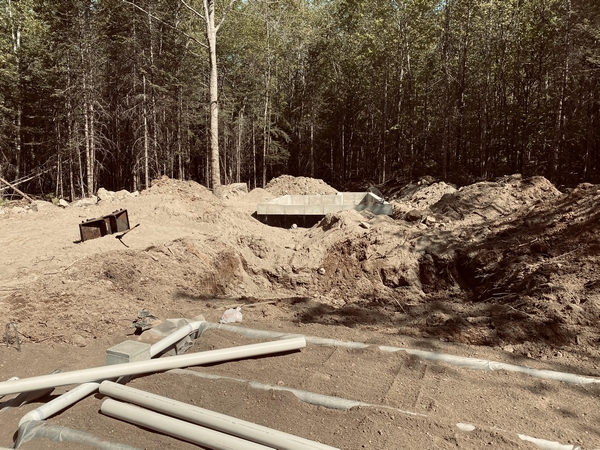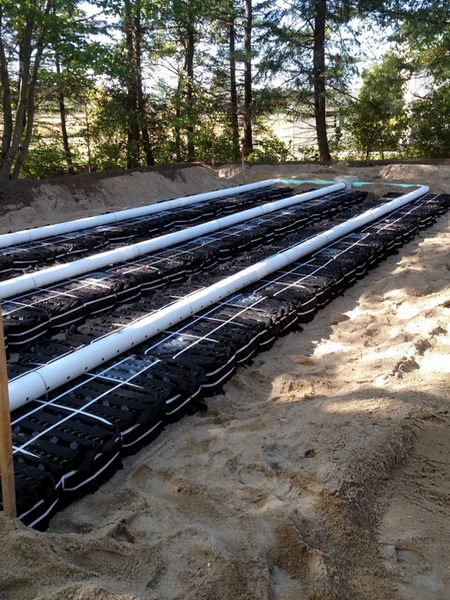Septic Design and Installation
The installation of a septic tank and drain field requires precise planning and excavation to ensure that the tank isn’t damaged over time and functions properly. There are many parts to this project, but this article focuses on preparing and excavating the space.
Permits
As with many excavation projects, your septic system planning needs to start with an assessment of your soil and a site survey. American Excavation will take care of all permits associated with your project. If you are having issues with your septic, feel free to call me. I can walk you through some troubleshooting steps to help you determine if you have an issue and determine next steps.
There are many factors that determine the cost of a replacement or new system. For this project, the most important factors are the soil type and its ability to drain wastewater.
There are two main types of septic systems: gravity-fed and pump systems. This particular system is an Eljen gravity fed system. Once we do a site evaluation, we will determine the system you will need to install. This allows them to see what types of soils you have, to the depth of about 6 ft. Typically, this is enough to provide a permit. Sometimes they may want an excavator to come out with a backhoe or excavator to dig deeper; sometimes to the depth of 17 ft. We typically dig deeper when no sand is present. For septic systems, sand is like gold.
No matter what type of system you install, your septic tank excavation has two main parts—the septic tank location, and the drain field (or leach field).
Each municipality has its own requirements on slope, distances to property lines, foundations, wells, etc. On to the drain field. This is essentially a large pit dug into your yard that is filled with certain size gravel, then covered with 12 inches of sand, then 2- 4 inches of top soil. The size of the drain field that your system will need depends on both the size of your home (bedrooms) and the drainage abilities of your soil, based on the results of your initial soil tests. The drain field is where the effluent from your home, that has been treated in the septic tank, can now enter safely and slowly back into the environment.
If you happen to have poor soils, that is where a above ground mound system is required. Typically, we bring in 300-500 yards of sand, which we use that sand to create a large sand mound that is an above ground and cleans your effluent before it reaches your current grade of your yard. Based on how many bedrooms and a couple of other factors, you will normally have 3 septic tanks, the 3rd tank is a pump tank. That tank will pump the effluent into your raised drain field.
If you are in need of a septic tank or drain field to be installed, contact me today here or call me directly at 207-500-8100



